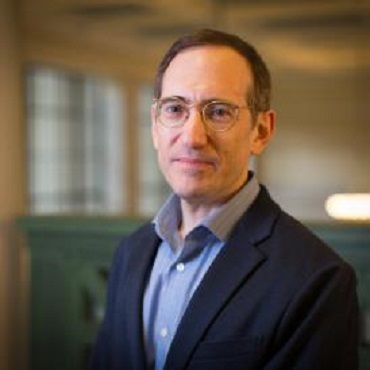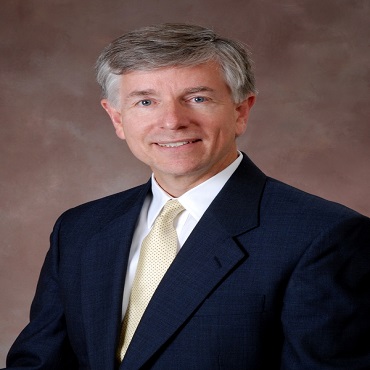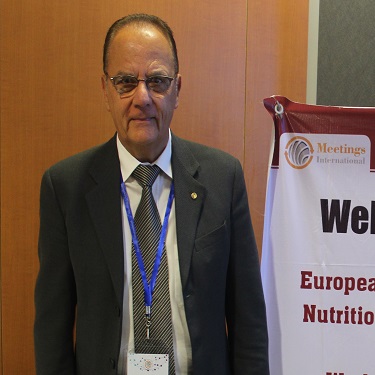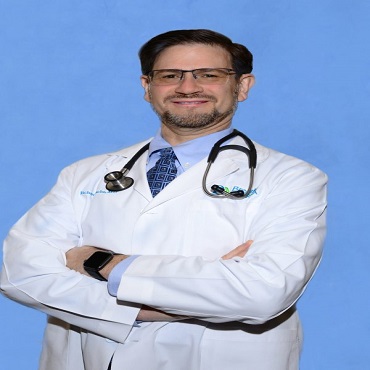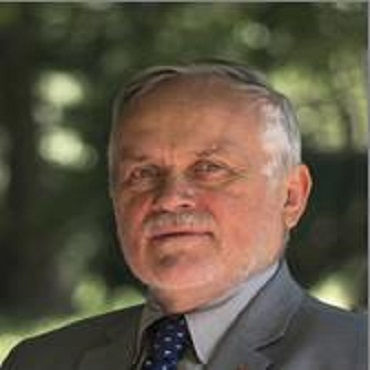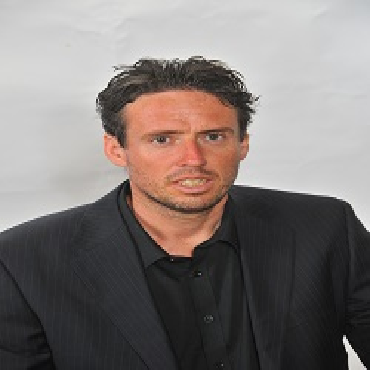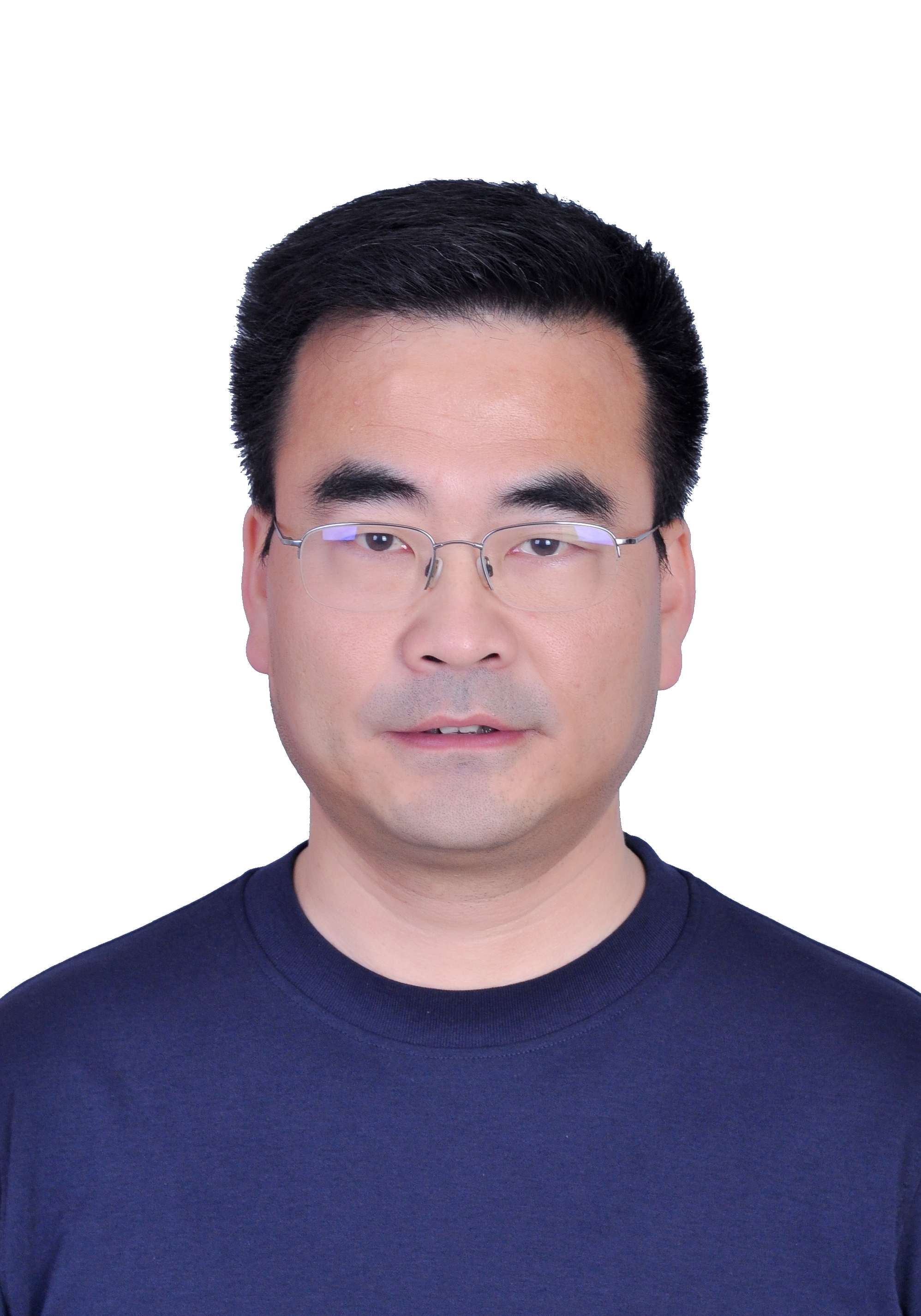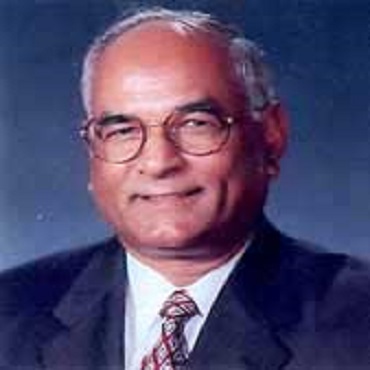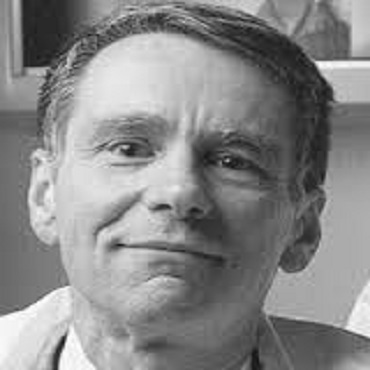
Enzyme 2019

Theme: New discoveries in Enzymology & Molecular Biology
Meetings International is proud to host upcoming “International Conference on Enzymology & Molecular Biology” throughout December 06-07, 2019 in Berlin, Germany. This is an exceptional opportunity for the delegates from Universities and Institutes to engage with the world magnificence Scientists. The conference revolves across the subject – “Novel Advancements in Enzymology and Molecular Biology”.
The huge issue coverage of the Conference and its size provide an remarkable placing for individuals to benefit precious insight into progress in research areas beyond their very own. In addition a number special classes targets to engage contributors on broader troubles which includes teaching within the enzymology and molecular biology research.
The Enzymology Conference has a robust emphasis on aid and idea for the subsequent era of scientists, in conjunction with early-career researchers, a Young Researchers Forum, and sports to inspire interaction with peers and specialists.
Sessions/Tracks:
Track 1: Enzyme discovery
Enzymes are both macromolecular and micromolecular proteins and are located evidently. They are macromolecular biological catalysts and boost up chemical reactions. Enzymology deals with the study of enzymes, their kinetics, structure, and function, in addition to their relation to each different. Enzymes play a totally crucial function in the world. They act as a catalyst for a chemical response, whether that reaction includes the execution of DNA for the cause of cellular repair or for the digestion of any forms of meat as well as fowl. Biochemistry is the department of technology which offers with the chemical strategies within and associated with residing organisms. It is a laboratory based totally science that mixes each biology and chemistry. Biochemistry mainly focuses on methods that occur at a molecular level like interior our cells, reading components like proteins, lipids and organelles. It also looks at how cells speak with each other. Biochemists need to apprehend how the molecular structure relates to its function, and then allow them to are expecting that how the molecules will have interaction. Biochemistry covers a number medical disciplines, which incorporates genetics, microbiology, forensics, plant technology and medication.
Relevant Conferences
2nd International Conference on Molecular Biology , Nucleic Acids & Molecular Medicine, PHILADELPHIA, PENNSYLVANIA, USA on August 31- September 01. 2017. 9th International Conference on Structural Biology, ZURICH, SWITZERLAND on September 18-20, 2017. 2nd International Conference on Biochemistry, DUBAI, UAE on September 28-29, 2017. 10th International Conference and Exhibition on Metabolomics, BALTIMORE, USA on October 19-20, 2017. 9th International Conference and Expo on Proteomics, PARIS, FRANCE on November 13-15, 2017.
Track-2: Molecular Enzymology & Enzyme mechanisms
Molecular enzymology is that department of biochemistry which encircles or offers with the functional in addition to the structural characteristics of the enzymes within a molecular degree. Enzymes are globular proteins which play a completely essential role as a catalyst for any type of biochemical reactions. Molecular enzymology is based on designing and enzyme synthesis and excessive unmet medical wishes are based on innovative drug objectives. These works are based totally on revolutionary drug targets. Molecular Enzymology's hobby consist of in all factors related to enzymes like discovery of enzymes, structure of enzymes, enzyme mechanisms, cellular and metabolic capabilities of enzymes, discovery of medication, biochemical aspects of enzymes, bioinformatics, computational analysis, research for molecular modeling, newer strategies in enzyme expression in addition to purification, bio catalysis, bio molecular engineering, enzyme kinetics and enzyme inhibitors.
Relevant Conferences
3rd International Conference on Genetic and Protein Engineering, LAS VEGAS, USA on November 08-09, 2017. 3rd International Conference on Transcriptomics, BANGKOK, THAILAND on October 30 - November 01, 2017. 9th International Conference on Bioinformatics, PARIS, FRANCE on November 13-14, 2017. December 11-12, 2017. 10th International Conference on Proteomics and Bioinformatics, DUBAI, UAE, on April 23-24, 2018. 2nd International Molecular Medicine and Diagnostics Conferences, DUBAI,UAE on May 17-19,2018. 4th World Congress On Protein and Bio-Medical Engineering, SINGAPORE, on July 16-18, 2018. 4th International Conference on Glycobiology and Glycochemistry, MELBOURNE, AUSTRALIA.
Track-3: Clinical Enzymology & Enzyme engineering
Clinical enzymology deals with the measurement of enzyme activity for the analysis and remedy of sicknesses. Enzymes are macromolecular catalysts which growth the price or pace of physiologic reactions. Each and every reaction happening every day in our frame takes vicinity with the assist of an enzyme or the opposite. In widespread, most of the enzymes are found in cells at plenty better concentrations than that in plasma. Measurement of these tiers in plasma shows whether or not their tissue of starting place is broken causing to the discharge of intracellular additives into the blood. This forms the premise of what's known as medical enzymology. Thus we will say that clinical enzymology refers to size of enzyme hobby for the analysis in addition to the remedy of diseases.
Relevant Conferences
9th International Conference on Structural Biology, ZURICH, SWITZERLAND on September 18-20, 2017. International Conference on Glycobiology, HOUSTON, TEXAS, USA on September 21-22, 2017. 2nd International Conference on Biochemistry, DUBAI, UAE on September 21-22, 2017. 10th International Conference and Exhibition on Metabolomics, BALTIMORE, USA on October 19-20, 2017. Global Proteomics Conference, DUBAI, UAE on October 25-26, 2017.
Track 4: Introduction to the CRISPR/Cas9 system and Genome Editing
Although recently developed programmable editing tools, such as zinc finger nucleases and transcription activator-like effector nucleases, have significantly improved the capacity for precise genome modification, these techniques have limitations. CRISPR (clustered regularly interspaced short palindromic repeats)/Cas9 technology represents a significant improvement over these other next-generation genome editing tools, reaching a new level of targeting, efficiency, and ease of use. The CRISPR/Cas9 system allows for site-specific genomic targeting in virtually any organism.
Genome editing is a way of making specific changes to the DNA of a cell or organism. An enzyme cuts the DNA at a specific sequence, and when this is repaired by the cell a change or 'edit' is made to the sequence
Relevant Conferences
2nd International Conference on Molecular Biology , Nucleic Acids & Molecular Medicine, PHILADELPHIA, PENNSYLVANIA, USA on August 31- September 01. 2017. 9th International Conference on Structural Biology, ZURICH, SWITZERLAND on September 18-20, 2017. 2nd International Conference on Biochemistry, DUBAI, UAE on September 28-29, 2017. 10th International Conference and Exhibition on Metabolomics, BALTIMORE, USA on October 19-20, 2017. 9th International Conference and Expo on Proteomics, PARIS, FRANCE on November 13-15, 2017.
Track 5: Macromolecular Biochemistry & Tissue Engineering
Macromolecular Biochemistry is a section of the Leiden Institute of Chemistry at Leiden University, comprizing the PIs Marcellus Ubbink and Remus Dame. The research is aimed at understanding protein & nucleic acid structure, function and interactions. Particular interests comprise protein-protein interactions & enzyme function (Prof. Ubbink) and biophysical aspects of protein - DNA interactions (Dr. Dame).
A macromolecule is a very large molecule, such as protein, commonly created by the polymerization of smaller subunits (monomers). They are typically composed of thousands of atoms or more. The most common macromolecules in biochemistryare biopolymers (nucleic acids, proteins, carbohydrates and lipids) and large non-polymeric molecules (such as lipids and macrocycles).Synthetic macromolecules include common plastics and synthetic fibers as well as experimental materials such as carbon nanotubes.
Tissue engineering is the use of a combination of cells, engineering and materials methods, and suitable biochemical and physicochemical factors to improve or replace biological tissues. Tissue engineering involves the use of a tissue scaffold for the formation of new viable tissue for a medical purpose. While it was once categorized as a sub-field of biomaterials, having grown in scope and importance it can be considered as a field in its own.
Relevant Conferences
2nd International Conference on Molecular Biology , Nucleic Acids & Molecular Medicine, PHILADELPHIA, PENNSYLVANIA, USA on August 31- September 01. 2017. 9th International Conference on Structural Biology, ZURICH, SWITZERLAND on September 18-20, 2017. 2nd International Conference on Biochemistry, DUBAI, UAE on September 28-29, 2017. 10th International Conference and Exhibition on Metabolomics, BALTIMORE, USA on October 19-20, 2017. 9th International Conference and Expo on Proteomics, PARIS, FRANCE on November 13-15, 2017.
Track 6: Biological Imaging, Biomechanics & Biomolecular Engineering
Recent advances in computational and bio imaging techniques have greatly enhanced the ability of biomedical engineers to better understand the dynamics of the human body and functions of living organisms. Specifically, recent advanced computational, mathematical, and physical methods have helped researchers to develop sophisticated techniques that can solve the problems encountered in the fields of bionics and biomechanics and improve the visualization of biological systems and design of new medical devices. Prominent examples include the tagged magnetic resonance imaging for studying brain biomechanics and medical ultrasound imaging for imitating animal echolocation. These advances in imaging and visualization methods are helping identify, classify, and quantify patterns in bionics and biomechanical investigations.
Biomolecular engineering is the application of engineering principles and practices to the purposeful manipulation of molecules of biological origin. ... The thermodynamics and kinetics of molecular recognition in enzymes, antibodies, DNA hybridization, bio-conjugation/bio-immobilization and bio separations are studied.
Relevant Conferences
2nd International Conference on Molecular Biology , Nucleic Acids & Molecular Medicine, PHILADELPHIA, PENNSYLVANIA, USA on August 31- September 01. 2017. 9th International Conference on Structural Biology, ZURICH, SWITZERLAND on September 18-20, 2017. 2nd International Conference on Biochemistry, DUBAI, UAE on September 28-29, 2017. 10th International Conference and Exhibition on Metabolomics, BALTIMORE, USA on October 19-20, 2017. 9th International Conference and Expo on Proteomics, PARIS, FRANCE on November 13-15, 2017.
Track 7: Structural Biochemistry, Synthetic Biology & Tissue Engineering
Structural Biochemistry/Enzyme. Enzymes are macromolecules that help accelerate (catalyze) chemical reactions in biological systems. This is usually done by accelerating reactions by lowering the transition state or decreasing the activation energy. ... These residues are called the catalytic groups. Enzymes made from artificial molecules which do not occur anywhere in nature have been shown to trigger chemical reactions in the lab, challenging existing views about the conditions that are needed to enable life to happen. A team of researchers have created the world’s first enzymes made from artificial genetic material.
The synthetic enzymes, which are made from molecules that do not occur anywhere in nature, are capable of triggering chemical reactions in the lab. Enzyme systems like tyrosinases, transferases and lysyl oxidases show interesting characteristics as dynamic scaffolds and as systems for controlled release. Increased attention is currently paid to hydrogels obtained via crosslinking of precursors by transferases or peroxidases as catalysts. Enzyme-mediated crosslinking has proven its efficiency and attention has now shifted to the development of enzymatically crosslinked hydrogels with higher degrees of complexity, mimicking extracellular matrices. Moreover, bottom-up approaches combining biocatalysts and self-assembly are being explored for the development of complex nano-scale architectures. In this review, the use of enzymatic crosslinking for the preparation of hydrogels as an innovative alternative to other crosslinking methods, such as the commonly used UV-mediated photo-crosslinking or physical crosslinking will be discussed.
Relevant Conferences
3rd International Conference on Genetic and Protein Engineering, LAS VEGAS, USA on November 08-09, 2017. 3rd International Conference on Transcriptomics, BANGKOK, THAILAND on October 30 - November 01, 2017. 9th International Conference on Bioinformatics, PARIS, FRANCE on November 13-14, 2017. December 11-12, 2017. 10th International Conference on Proteomics and Bioinformatics, DUBAI, UAE, on April 23-24, 2018. 2nd International Molecular Medicine and Diagnostics Conferences, DUBAI,UAE on May 17-19,2018. 4th World Congress On Protein and Bio-Medical Engineering, SINGAPORE, on July 16-18, 2018. 4th International Conference on Glycobiology and Glycochemistry, MELBOURNE, AUSTRALIA.
Track 8: Advances in cellular and molecular biology
There have been a number of major advances in molecular biology in the past few years and the aim of this review is to describe some of these advances, focusing on their benefits and limitations when applied to investigating pulmonary disorders. It is written with the practising pulmonary researcher in mind, not as an introduction for the uninitiated. Useful web addresses and a list of references are included to enable interested readers to examine each technique in detail.
Relevant Conferences
3rd International Conference on Genetic and Protein Engineering, LAS VEGAS, USA on November 08-09, 2017. 3rd International Conference on Transcriptomics, BANGKOK, THAILAND on October 30 - November 01, 2017. 9th International Conference on Bioinformatics, PARIS, FRANCE on November 13-14, 2017. December 11-12, 2017. 10th International Conference on Proteomics and Bioinformatics, DUBAI, UAE, on April 23-24, 2018. 2nd International Molecular Medicine and Diagnostics Conferences, DUBAI,UAE on May 17-19,2018. 4th World Congress On Protein and Bio-Medical Engineering, SINGAPORE, on July 16-18, 2018. 4th International Conference on Glycobiology and Glycochemistry, MELBOURNE, AUSTRALIA.
Track 9: Enzyme engineering and recombinant enzyme technology
Enzyme engineering or protein engineering is the process of designing proteins or enzymes by changing the sequence of amino acids through recombinant DNA mutation. Directed revolution and rational design are the two techniques used in enzyme engineering or protein designing in the process of drug discovery.
Enzymes are large biological molecules responsible for the thousands of metabolic processes that sustain life. They can speed up the reaction and cut back the activation energy required to start the reaction. Without them, most of the reactions would not occur with a suitable efficiency. Most enzymes are proteins, although some catalytic RNA molecules have been identified. Enzyme activity can be affected by other molecules as well. Inhibitors are molecules that decrease enzyme activity, while activators have the opposite function. Temperature, pressure, chemical environment and the concentration of substance can also affect the enzyme’s activity.
Relevant Conferences
9th International Conference on Structural Biology, ZURICH, SWITZERLAND on September 18-20, 2017. International Conference on Glycobiology, HOUSTON, TEXAS, USA on September 21-22, 2017. 2nd International Conference on Biochemistry, DUBAI, UAE on September 21-22, 2017. 10th International Conference and Exhibition on Metabolomics, BALTIMORE, USA on October 19-20, 2017. Global Proteomics Conference, DUBAI, UAE on October 25-26, 2017.
Track 10: Current approach in biochemical techniques & Regenerative Drug
Controlling structural organization and signaling motif display of biomimetic matrices at the nanometer scale is of great importance to the functional design of tissue regenerating materials. We have genetically engineered M13 bacteriophage (phage), naturally occurring nanofiber-like viruses, to display a high density of cell-signaling peptides on their major coat proteins. Structural orientation of these phage building blocks can be achieved due to their long-rod shape and monodispersity, which lead them to self-assemble into directionally organized liquid crystalline-like materials. We showed that the constructed viral nanofiber scaffolds were able to support neural progenitor cell proliferation and differentiation as well as direct orientation of their growth in three dimensions.Suchfunctionalized and structurally aligned phage matrices offer promising opportunities for therapies that address challenging medical problems, such as nerve tissue regeneration after spinal cord injuries, or as in vitro model systems for studying complicated cell signaling environments.
Relevant Conferences
9th International Conference on Structural Biology, ZURICH, SWITZERLAND on September 18-20, 2017. International Conference on Glycobiology, HOUSTON, TEXAS, USA on September 21-22, 2017. 2nd International Conference on Biochemistry, DUBAI, UAE on September 21-22, 2017. 10th International Conference and Exhibition on Metabolomics, BALTIMORE, USA on October 19-20, 2017. Global Proteomics Conference, DUBAI, UAE on October 25-26, 2017.
- Enzyme discovery & Biochemistry
- Molecular Enzymology & Enzyme mechanisms
- Clinical Enzymology & Enzyme engineering
- CRIPR/ Cas9 System and Genome Editing
- Macromolecular Biochemistry & Tissue Engineering
- Biological Imaging, Biomechanics & Biomolecular Engineering , nuclease mechanism
- Structural Biochemistry, Synthetic Biology & Tissue Engineering
- Advances in cellular and molecular biology
- Enzyme engineering and recombinant enzyme technology
- Current approach in biochemical techniques & Regenerative Drug
- Journal of Molecular Biology and Methods
- Cell Biology: Research and Therapy
6 Organizing Committee Members
16 Renowned Speakers
Alexander I. Archakov
Institute of Biomedical Chemistry, RAS, Moscow
Russia
Ryszard Ostaszewski
Institute of Organic Chemistry
Polish Academy of Sciences,
Kasprzaka
Poland
PHUMSOMBAT Putthapong
Ritsumeikan University, Kusatsu, Shiga
Japan
WOJCIECH KWASNIEWSKI
Medical University of Lublin
Poland
David Finger
University of Sheffield
UK
Simon Raymond
Melbourne University, Parkville
Australia
Niphawan Panti
Ritsumeikan University, Kusatsu, Shiga
Japan
Shuxin Han
University of Science and Technology of China
China
CLABAULT Chloe
L Oreal Research and Innovation, Chevilly Larue
France
Ngangom Arunkumar Singh
Regional Institute of Medical Sciences , Manipur
India
Eshita Sharma
Institute of Himalayan Bioresource Technology
India
Bevin P. Engelward
Massachusetts Institute of Technology (MIT)
(Invited)
USA
Sen Pathak
The University of Texas M. D. Anderson Cancer Center
USA
Paul J. Higgins
Albany Medical College
USA
Ernest Fraenkel
Massachusetts Institute of Technology (MIT)
(Invited)
USA
Chin-Tarng Lin
National Taiwan University
Taiwan

